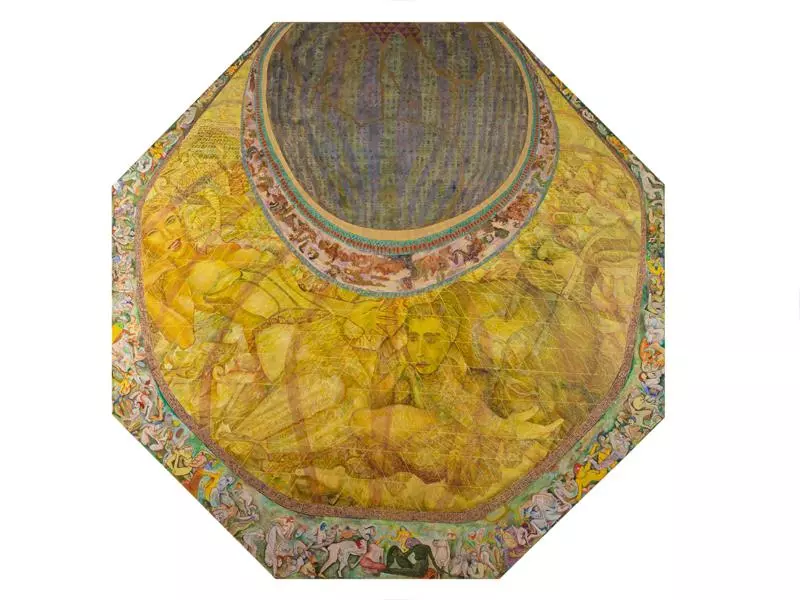The Vase (The Lovers)
Within the painting are two figures, shown trapped within the vase. The bold pictorial structure employed adds to the connotations of a trapped romance. Lines and colour were used to induce a particular mood. For instance, the horizontal and diagonal lines that cover the yellow section of the painting and which come metaphors of a golden cage as it were. Testimony to this emotional tension is the portrayal of the man. The left arm of the man seems to move, for it is painted in two position, one straight down, the other above him with only the top shoulder showing, the rest blending into the composition.
There exists a complex relationship between style and imagery. Diagonal lines from left to right and vice versa within the yellow interior of the painting begin from very large in the foreground to becoming progressively smaller as one goes toward the top of the painting. In addition to this their pattern also changes. These complementary initiatives were in order to give some indication of the shape of the vase and to demonstrate some recession in space. Also violet arcs traverse the yellow interior so as to give some indication of the round shape of the vase. These same arcs are shown in reverse on the inside of the vase.
The painting also reveals a complicated relationship between viewer and painting. Because the vase has been pulled out and flattened. The man is originally to be seen to be pressed down underneath the circle and the woman floating away above him. She was seen to be looking out of the picture, invitingly, to the viewer. Represented in this way these figures give some insight into the relationship between them and their respective characters. However if the viewer were to visualize the vase’s actual physical three-dimensional presence; then the woman and man would be on the same level. Indeed far from subservient, the position of the man would be closer to the viewer and above the woman. This form of multiplicity creates complex and varied levels of meaning. For example, rather than looking out of the painting the woman would be looking towards this man, as his position would now be in front of her. In this way the relationship between the characters change and in doing so includes the viewer in the deconstruction of the painting in the same way as Edourd Manet’s “Olympia”. It was to make this impact more explicit that the decadent and synthetic imagery in the borders was also incorporated, so as to contrast against the romantic imagery at the centre.
 Share / Save
Share / Save






Comments 0
Say something